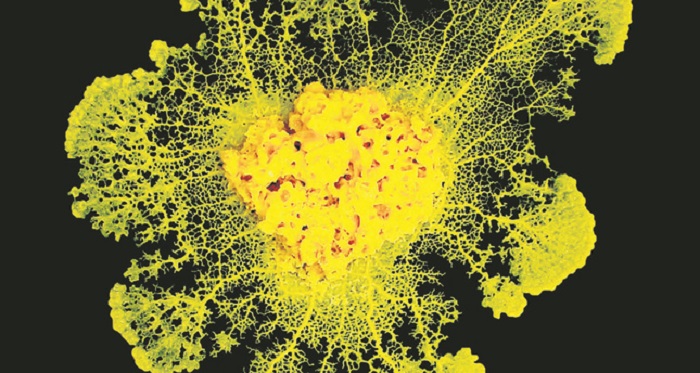For the study, researchers from Belgium and France sought to demonstrate "habituation learning" in a brainless organism. Habituation learning is when original behavior changes in response to repeated stimulus - think of a human losing their fear of needles after being repeatedly exposed to them in phobia therapy. The team wanted to see whether an organism without a nervous system could similarly "learn" from experience and change its behavior accordingly.
They chose a very humble life form indeed -Physarum polycephalum, also known as "many-headed slime."
Single P. polycephalum cells meld into a single, yellow blob -- specimens of which can be found on decaying leaves and tree trunks in cool, moist spots. The slime moves from place to place, albeit very slowly, by extending finger-like protrusions called pseudopods.
The scientists grew slime samples in petri dishes containing a gel made of agar, a jelly-like substance derived from algae.
They then placed each sample near another petri dish containing a meal of oats, also in agar gel. The two dishes were separated by an agar gel "bridge" for the slime to "crawl" across, which it generally did within about two hours. For the experiment, the team then polluted a part of the "bridge" with quinine or caffeine in concentrations that were bitter, but not harmful, to the slime.
The slime "showed clear aversive behavior" at first, they observed. It hesitated, then took more than three times as long to cross the bridge by a very narrow path as it sought to avoid touching the offensive substance.
In the days that followed, the crossings became quicker -- evidence that the slime became "habituated" to the quinine or caffeine, said the team. These findings in an organism which precedes humans by some 500 million years suggests that "learning" may predate the emergence of nervous systems, said the researchers. "Our results point to the diversity of organisms lacking neurons," they wrote, "which likely display a hitherto unrecognized capacity for learning." The discovery may boost understanding of the behavior of other simple organisms such as viruses and bacteria.
More about:
















































